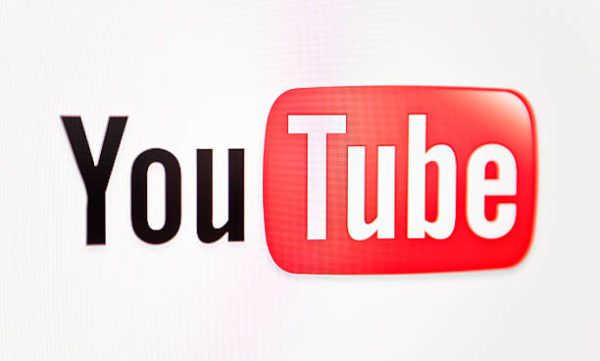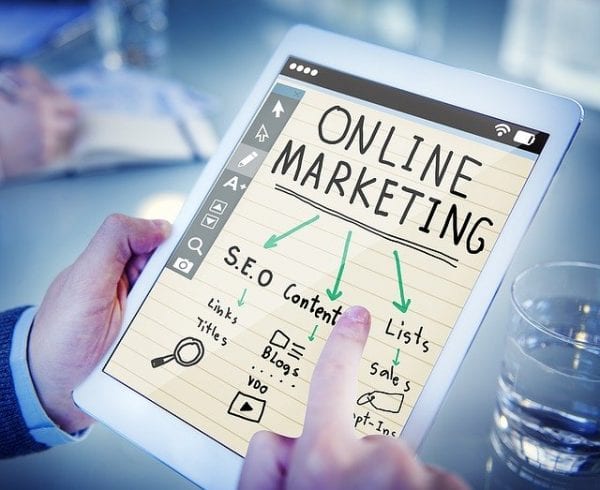Social media has evolved over the years from just a tool used to connect with friends and families to a platform used to market to billions of people worldwide. According to Statista, there were five billion internet users in the world of which 4.65 billion were social media users. That’s why online marketers need to maintain an online presence on social media to have access to this large audience. If used effectively, social media can help online marketers and e-commerce businesses increase brand awareness, generate followers and boost their overall marketing efforts. However, most businesses don’t really know how to use social media to promote their online store. Don’t worry we will cover everything you need to know on how to use social media to promote your online store.
What is Social Media Marketing
Social media refers to an internet-based form of communication which allows users to have conversations, share information and create web content. There are different forms of social media which include social networking sites, photo-sharing sites, instant messaging, video-sharing sites, podcasts, virtual worlds and many more. Examples include Facebook, Snapchat, Twitter, Instagram, WhatsApp, Linkedin, Quora, Reddit, Pinterest and many more. Social media marketing on the other hand is the process of using social media platforms like Facebook, Instagram and Twitter to market your product and services to your target audience. As of October 2020, there was an estimated 4.08 billion active mobile social media users worldwide.
Why Social Media is Important for your Online store?
1. To help build brand awareness
As an online marketer or e-commerce business owner, the best way to get started is by maintaining a social media presence. The truth here is that you can’t make any sales if people don’t know you. That is why awareness is very important. Some social media platforms like Facebook and Instagram have an awareness ad campaign objective that brands can leverage to get their business out there. Once you establish an online presence on social media, you can start creating content around that presence to further encourage and educate your audience. A unique voice and a consistent posting strategy will help you build brand awareness and reach your target audience.
2. Help drive traffic and increase followers
Social media is a good way to generate traffic to your website. Because of the large audience on social media, it has become a medium that is used to increase traffic and also gain new followers. When you share links to your blog posts, products and other marketing promotions on your social media page, you are automatically sending traffic to your website. Running social media ads is another way of increasing traffic to your website. When you host giveaways and contests, you can ask your audience to follow, like and comment on your page by rewarding them with some gifts.
3 Help with customer engagement
Social media platforms are some of the best tools for engaging with customers and prospects. Most businesses always have a social media handle or page to promote their products and services. A brand can easily answer any customer complaints, queries or questions. Facebook, Twitter and Instagram are some of the best platforms for engaging with customers. You can also engage them through your content. This might be in form of a video, image, infographics, contest and giveaways. Engaging with your customer improves your customer experience and satisfaction
4. Generate leads and customers
You can also generate leads and conversions directly on these platforms, through features like Instagram/Facebook shops, direct messaging, call to action buttons on profiles, and appointment booking capabilities. When you create high-quality content, your audience is bound to share or retweet your post thereby exposing your content to a larger audience. You can also host giveaways and ask your customer to perform a small task like following your Facebook page and tagging a particular product. This way, you end up having more followers and engagement on your social media pages.
How to Use Social Media To Sell your product?
1. Identify and Define Your Goals
Before you start using social media to promote your online store, you need to clearly define what you want to achieve by using social media for your business. There is no point in creating content and engaging with followers if there is no goal to achieve or means of monitoring progress. Note that the goal must be clear, realistic and specific.
Some social media goals include;
- Generating traffic to your website
- brand awareness
- increasing leads
- Engagement rates
- Conversions
To be more specific your goals can be something like this;
- We want to drive more traffic to our website
- Convert 10% of post viewers to site visitors
- Have 10,000 monthly site visits within 8 months
- Increase our Instagram and Facebook followers by 20% within 6 months
- Grow a community of 3000 followers on Facebook in 12 months
Look for measurable and realistic and actionable goals. Getting new followers sounds fantastic, but if none of them is visiting your website, it might be worthless.
2. Identifying Your Target Audience
There are over 4.48 billion social media users in the world, but that doesn’t mean all those 4.48 billion people are your audience. This means that as an online marketer, you have to identify your audience in this large pool. Identifying your audience will allow you to streamline your marketing strategies to a niche that is interested in what you sell or offer. This will allow you to get more results and get you close to achieving your goals as mentioned above.
One way to identify your audience is by creating a customer avatar or customer personae. Another way is to carry out research or marketing surveys through social media platforms or Google forms. You can use the data gotten from the results to know more about your niche. Customer feedback is another way you can reach your target audience. Getting reviews and feedback from your customers can give you an insight into how they feel about your brand
Using software like Hootsuite, Keyhole or Google Analytics can give you an idea of your target audience and where they spend most of their time. Clearly defining your target audience can have a tremendous effect on your social media marketing strategy by creating content that will resonate with them. Having a clear understanding of who you are targeting will allow you to run an efficient campaign with the right audience thereby generating profitable results for your business.
3. Choose The Right Platform
As an e-commerce business owner, you don’t have to be on every social media channel to sell your products. When choosing the right platform for your online business, you need to ask yourself the following questions;
- Who is your Audience?
- Which social media channels do they use?
- What kind of content are you creating?
- Is it going to be image-based, video-based, blog posts or links?
- What goals do you want to achieve by using social media?
- Which channels are your competitors using?
- How many social media channels can you manage?
If you look at these questions, you will realise we have answered two out of them. We have established what we mean by social media goals and we have been able to explain what we mean by the target audience. we will explain the others in this section. As we established above, you don’t have to be on every social media channel. You just have to be on those that your audience is most active on. Note that I said active because it is possible for your audience to be on a platform and not active on that platform. For example, a Facebook user who has not accessed the platform since 2021.
You can use Google analytics or Hootsuite to trace certain keywords or hashtags to see which social platforms are directing the most traffic to your website.
Another thing to note is that each social media platform has a specific form of content that resonates with them. For example, Facebook and Instagram will resonate more with text, images, videos and links. Twitter will resonate more with images, videos and text. While Pinterest and Snapchat will resonate more with images and videos respectively. Therefore you should focus on platforms that will resonate more with the type of content you are creating.
Once you have the right platforms, it’s time to start building your presence and dominating your niche with the most relevant content and the best interactions with the audience.
4. Leverage Social Media Ads
Most social media platform has a useful tool for online marketers to serve targeted advertisements to potential customers. Social media ads are a way to promote your online store to your target audience by creating an Ad, setting your budget, and paying for every click or number of impressions the ad receives. The advantage of using social media ads is that it has the potential to reach a large number of people depending on your budget and keyword. You can leverage Facebook and Instagram’s advanced targeting technology based on demographics like age, location, interest and many more. Facebook also offers the chance to retarget people who have seen your ads or engaged with your post or even visited your website and taken some certain action but they didn’t buy or patronize your service. When you reach out to those people you stand a much better chance of making the sale.
5. Host Contest and Giveaways
Hosting contests, discounts and giveaway campaigns can be very effective when it comes to promoting your online store. People are generally drawn to discounts and offers and we want to take advantage of them. Creating offers like free shipping, discount vouchers, coupons and free items is a great way to increase traffic to your website and generate sales. One way to promote discounts and offers is through email marketing. Sending cart abandonment emails with different offers to your customers is one of the best ways to promote your online store. Furthermore, hosting contests on your social media page can even drive more traffic to your online store. For example, you can tell your audience to subscribe to your email letter and send the screenshot to your social media page and they will be instantly offered a product voucher worth 10% off. Asking them to tag your business and share it with their contact list can be an immense help in spreading the word about your business. Similarly, incorporating polls in your posts will not only magnify engagement but also provide you with deep insight into your audience’s thought processes and behaviour.
6. Leverage Automation Tools
The best way to get the best out of your social media strategy is to leverage various automation tools. Making use of a social media automation tool can make your social media marketing much easier and smoother. Social media marketing involves analyzing the competition, responding to comments, creating and scheduling content, and producing analytics. This is a lot of work, but with an automation tool, you can optimize your workflow without losing your personality or credibility
Here are some tools you can use to make your work easier;
Content creation and scheduling;
- Hootsuite
- Buffer
- Socialsprout
- Sendible
- CoSchedule
Graphics designing tools
- Canva
- Piktochart
- Postermywall
- AdobeSpark
Analytics and reporting
- Buffer
- Google analytics
7. Consider the Mobile Experience
As of 2021, statistics show that 5.22 people have access to a mobile device and there are 4.08 billion active mobile social media users worldwide. These statistics show that more people are accessing social media networks and websites via their phones than ever before. Therefore your online shop must be mobile-friendly and responsive to all kinds of mobile devices like android, iPhone and tablets. In addition, payment options should also be mobile-friendly. For example, Apple Pay allows you to let users make purchases from their phones.
Another thing to consider is the content format. Your content format needs to align with mobile devices as well. Videos for example need to be in vertical form. People like convenience, a personalized experience, and to feel like they can easily navigate and engage with your site.
Strategies for Promoting your online store through some social media platform
1. Facebook

Facebook is the most popular social media platform in the world with more than 2.936 billion active users as of April 2022. So you can be sure that at least a few of your potential customers are spending time there. Plus, those users spend an average of 40 minutes on the site each day, meaning that they aren’t just checking their personal notifications and leaving.
Most e-commerce business owners can start with Facebook by creating a Facebook business page for their business. After creating your page, you can start uploading and sharing various images and videos of your product and sales announcements. You can also share links to interesting content on your website, host contest and giveaways and any other interesting thing you know your customers will be interested in.
Leverage Facebook ads by using its advanced targeting technology to reach your target audience. Also, make use of its retargeting strategy to reach those that have engaged with your ads and seen your products but did not eventually buy. Every popular social media platform has a useful tool for marketers to serve targeted advertisements to potential customers. Most operate similarly to Google Ad i.e you create an Ad, set your budget, and pay for every click or number of impressions the ad receives. Facebook also has a “dynamic ads” feature that allows owners to upload entire catalogues and promote relevant content to individual users. Furthermore, you can also set up a store on the Facebook marketplace and run ads for your target audience.
2. Instagram

Instagram is another platform you can use to promote your online store. Since Facebook owns Instagram, some of Facebook’s marketing strategies can also be applied to Instagram. The platform is more built for sharing images and videos which makes it an ideal platform for any retailer who wants to show off their products. Plus, now that it has over 500 million monthly users, the chances of your potential customers being on the platform are extremely high.
In addition to sharing images, Instagram can also be used to share a behind the scene look of your company, a product explainer video and a how-to video(read our blog on how to create social media videos). You can also use Instagram ads which work similarly to Facebook ads to reach more potential audiences. (read our post on Instagram ads). Instagram also allows swipe-up links on stories and product stickers on posts that, when clicked on, lead viewers directly to a product or catalogue.
Posting on Instagram depends on your industry, although Mondays and Thursdays are the best days to post on Instagram. But I will advise posting at least once a day.
Make use of relevant hashtags to your industry, allowing you to reach new audiences. You can also use of an influencer in your particular industry to help you promote your store.
3. Twitter

Twitter has 290.5 million monthly active users worldwide as of 2019 and it’s projected to rise to 340 million users by 2024, and 52% of its users say they’ve bought a product they first saw on Twitter.
Twitter is a great place for sharing information about sales and links to product pages. Since Twitter cannot take long texts, you can share some texts and link to your blog post and drive traffic to your website. Your content(text) needs to be efficient, as you only have 280 characters to communicate it. Post content on Twitter in the morning and at the end of the day. You can also use various analytic tools to research how people are engaging with your post. This will give you a better insight into when you can post on Twitter.
You can also run ad campaigns on Twitter and target an audience based on the other users they follow and the words they tweet. So if you’re looking to expand your paid advertising options, Twitter could be a logical next step for your business.
Make use of popular hashtags to help you reach new communities. Make use of images in your post because people are likely to engage more with a tweet with an image or video.
4. Youtube

Youtube is the second most-visited website in the world behind Google. The video website has over 2.1 billion users each month while users watch over 684,000 hours of video every minute. You need to take advantage of this opportunity.
Youtube is a platform most people go to learn about a particular problem. You should use this platform to promote your e-commerce business by creating educational videos, behind the scene videos, product explainer videos and other forms of videos that will resonate with your audience. Make sure to optimize your channels and videos by integrating keywords in your descriptions, titles and meta description.
You can also make use of youtube ads by bidding on relevant keywords, creating an Ad, setting your budget, and paying for every view or number of impressions the ad receives.
Conclusion
Social media is a great tool that cannot be ignored by online marketers if they want their e-commerce business to thrive in 2022. If used effectively, social media can help online marketers increase brand awareness, drive traffic to their website, generate and nurture leads, strengthen their brand, develop loyal fans and increase sales.
If you are using social media and not getting the desired result, we hope the above article will help you start generating the right result for your business.






